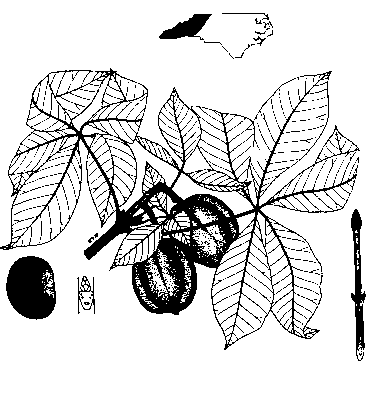|
Yellow
Buckeye
(Aesculus
octandra Marsh.)
|
|
| |
 |
|
| |
Yellow
buckeye (also called sweet buckeye or commonly, buckeye,) flourishes
in rich coves of the southern Appalachians. it is only found outside
the mountains in rich bottoms and moist uplands as a small tree
and shrub.
Yellow buckeye leaves are opposite, palmately compound with five
(sometimes seven) broad-oval, pointed leaflets 4 to 6 inches long.
Leaflet margins are coarsely toothed. Leaves turn yellowish brown
in early autumn. Flowers are pale yellow and appear in erect particles
5 to 6 inches long in April and May.
The fruit is a smooth-surfaced capsule 2 to 3 inches long, bearing
one to two large, brown, shiny nuts 1 1/2 to 2 inches wide. Seeds
contain a poisonous substance known as aesculin.
Occasionally, the tree will grow to 90 feet in height (commonly
to 40 to 60 feet), with a tall, clean trunk 2 to 3 feet in diameter.
It is the largest of the native buckeyes and is one of the first
trees to leaf in spring. The bark is grayish brown, scaly and
divided by shallow fissures. The wood is light, soft and close-grained.
It is used for pulpwood, woodenware and, sometimes, for lumber.
|
|
|

